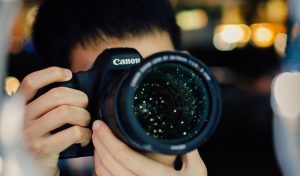
A picture sells a thousand meals: get serious about your photography.
It’s still one of the hardest things to make people see the value of, but custom professional photography makes all the difference. Yes, phones have great cameras these days, and they can add all sorts of filters and effects, but they are still a poor substitute for someone who understands lighting and composition and uses professional tools. Did you know, for example, that a crucial tool in the food photographers kit box is WD40? Not to keep the camera shutter from sticking, but to give the food that freshly cooked glisten. This is just one of the many tricks that a professional can employ that is going to heighten the photograph’s impact.
I routinely work with clients who can’t – or won’t – afford the time and effort required to do it properly. Real estate agents who provide phone-camera images taken from across the street at 2pm on a rainy day, for example. Or restaurants who provide instruction such as ‘use a nice picture of some shrimp’ without considering how this photograph needs to make their shrimp seem worth the extra time it takes to drive to their location.
If your budget won’t stretch to a professional, here are some tips to give your photos some value:
- Put some time into lighting and composition. When shooting food, for example, you can employ a little color theory. Most food is not blue, and anything in the brown/orange range (say, a nice apple pie) will contrast well on a blue background. The blue will recede, providing more focus to the food.
- Another valid route is stock photography, of course. Here you can benefit from the experience of a professional without the expense of a custom shoot. This limits you, however, to a certain generic quality to the imagery. If your shrimp cocktail is unique, it deserves its own photograph.
- If stock photography is necessary, try to limit the amount of ambient content in the scene. Go close in on the food, to avoid portraying elements that a guest won’t find in your establishment. The same can work for pillows or towels; just don’t accidentally show a beach in the background if you’re not on the coast. Ultimately, stock photography will be limiting because you won’t be able to find every shot you need in the same style, or from the right angle, and location-based marketing can only employ so much pretend ambience before appearing to be fake.
- If you’re shooting property, don’t just stand in the doorway and click; take shots from several angles and review them to see which is most flattering. You might vary your height as well as your angle, and crop out less flattering elements like air vents.
If you have to shoe-string it, try remembering these few nuggets.
- Invest in a tripod so you can make the most of natural light. Early or late in the day will appear the most appealing but are challenging to do well.
- Shoot in landscape format, it’s more appealing and natural.
- Use the right lens for the job: wide angle for property, macro for food.
Jeremy Spinks is VP of Online Design at BowStern Marketing Communications
